7 Strategies for Selling your Business FAST (For Maximum Value)
A quick (Step-by-Step) guide on selling your business quickly and efficiently

Want to sell your business? Want to maximize its value?
Then you’re in the right place.
Today I’m going to show you the exact step-by-step formula that’s going to make all the difference if you are interested in selling your business.
Lots of people ask me ‘How I can sell my business?’ – and many of them don’t for the following reason:
Because after the baby boomer boom, there are more businesses for sale than there are buyers.
In this guide, I will answer that question and offer my best strategies and ways on how you can maximize the sale of your business and sell it fast.
It gets better:
I’ll show you can go about selling your business quickly and at the highest price.
Let’s get started…
My advice on selling your business
I have a message for you, and it might surprise you – selling your business is a lot harder than you think.
Well, for starters, the number of small businesses up for sale is going to far outnumber the number of people who are willing and able to buy them.
In 2017, there wer 2.5 million businesses for sale in the English-speaking world.
How many do you think sold?
(You’ll find out later.)
Even more importantly, even if you do find a buyer, getting the deal done at a price you like is going to be a challenge.
Want to know the average sales price companies sold for? You’ll be surprised when you see the results.
Before I show you how to sell your business quickly and for the highest price, to understand how we got here we have to travel back in time to World War II.
The Baby Boom – The Unstoppable Force

Peter Drucker once said, “I don’t predict the future. I look at what has happened already and point out the inevitable result.”
So, here’s what happened:
In 1945, soldiers returning from World War II started to have a lot of babies…
A lot of babies.
Enough of them that the U.S. economy experienced 40 years of sustained growth as a result of the influx of new workers and consumers.
But this generation wasn’t different just because of their sheer numbers. This was the first generation that didn’t grow up to be a carbon copy of their parents.
They were the first generation to grow up with television, and because of it, the first generation to be explicitly marketed to over their entire lifecycle.
They were also raised differently than previous generations, in no small part because of a book published in 1946 by Dr. Benjamin Spock – The Common-Sense Book of Baby and Child Care.

Only one book outsold it during the entire 20th century – The Bible.
Say whaaaaat?!
It gets better:
That book argued that parents should design their schedule around their children and their emotional needs, rather than the strict and tightly controlled techniques used by previous generations.
Essentially, Boomers became the first generation where the family life revolved around them instead of their parents.
The Baby Boomers Generations were the first generation to believe that they could be anything they wanted to be when they grew up.
One of the things Boomers wanted badly was upward mobility. Because of the way they were brought up, they believed it to be their birthright. What they did for a living, and the material possessions they collected along the way, became a strong part of their identity.
As these Boomers reached their 30s, they started to view entrepreneurship as the only avenue for upward mobility. There just weren’t enough high-flying corporate jobs to go around.
Boomers create a small business boom.
To secure their upwardly mobile lifestyle, Boomers turned to entrepreneurship. In fact, they formed businesses at a rate never seen before…
…or since.
Between the years of 1976 and 1986, the then 30-something Boomers stepped up and almost doubled the number of new business formations – from an annual average of 300,000 previously to an average of over 500,000.
To put it in perspective:
Even though the U.S. population grew from 190 million in the mid-’80s to 320 million today, the number of business startups has remained flat since the one-time Boomer surge.
Why?
Two things made it possible for those entrepreneurs to succeed as a group: the outsourcing of family life and franchising.
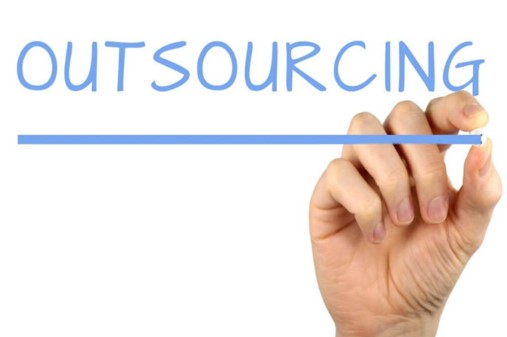
In other words:
Family life had to be outsourced because entrepreneurs needed to work longer hours – many times stretching into the evenings and weekends – to help pay for their upwardly mobile lifestyle. In many cases, both parents adopted that grueling schedule.
That required many everyday chores to be outsourced to third parties. Meals, housecleaning, home repair, gardening, and auto maintenance were all contracted out.
The Boomers thought that if they could get somebody else to take care of the mundane tasks of daily life, they could indeed have it all.
That led to the rise of franchising.
In return for a little cash up front and the willingness to work hard for long hours, these Boomers were promised a viable business.
What types of businesses were being franchised?
The ones that would do the work that Boomers wanted to outsource of course.
In hindsight:
The formula was simple.
- Start with a generation that is 50% larger than the previous one;
- Put 30% more of that group (women) into the workforce;
- Have most of the wealth generators extend their average week by another 20%.
What do you get?
An economy that triples between 1975 and 2005.
That rising tide is fine until those Boomers realize that the only way they are going to retire comfortably is to sell their business.
BUT:
The people they need to sell them to – Generation X – isn’t buying what they are selling.
That nicely leads me on to…
In 2017 there was 2.5 million business for sale in the English-speaking world. How many do you think sold?
The Answer: Only 200,000 Businesses Sold.
Gen X isn’t buying what the Boomers are selling

The most likely purchaser of a Boomer’s owner-operated business is somebody from Generation X.
There are two things to address before we move on with what that means.
First: There are different sets of buyers for mid-market and large companies, depending on the size and profitability of your company.
Second: Millennials are not good targets for business purchases today.
The Great Recession and the debt Millennials accumulated in the past decade mean that they won’t be a significant factor in the acquisition market for at least another 10 years.
That will be too late for many of the exiting Boomers.
So, if you are interested in selling your business…
#1 Understand whom you are selling to
Step #1 is to understand whom you are selling to. And Gen Xers couldn’t be more different from Boomers.
For starters:
They place greater emphasis on work/life balance. Their work is something they do so that they can enjoy their life.
(Just looks at your kids.)
For Boomers, their life and their work are often indistinguishable.
They also have different life objectives.
Personal happiness is their priority, not an upwardly mobile lifestyle.
This means that hard work – a requirement in most owner/operated businesses – is in direct conflict with what they value most.
Why do you think the 4-hour week by Tim Ferriss was a best seller?
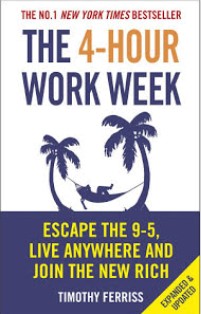
And if they don’t have what they want, instead of working harder or longer, they turn to easy credit.
So, living paycheck to paycheck has become the norm. What does this mean for Boomers selling their business?
In many cases, they may have to become the lender of last resort in order to get a deal done.
You can find out more how to structure the right deal to sell your business in the Stamford Exit Plan.
Then you’ve got the obvious demographic factors – there are simply more Boomer sellers than there are Gen X buyers.
In addition, there’s the gig economy which, purpose-built for a generation that values their independence, allows people to cobble together a living without the risks and headaches of owning a business.
Everything we’ve focused on in the guide so far has led us to the following conclusion:
Selling your business is a lot harder than you think.
Fortunately, there is a way to significantly increase your chances of selling your business for the price you want, to the buyer you want, and in the time frame, you choose.
It’s called the Stamford Exit Plan.
There’s no doubt about it:
You can Profit from your hard work… If you use the Stamford Exit Plan.
Now, let’s move on to some good news.
The good news is that most of the Boomer generation is woefully unprepared to sell their business.
That means that the ones that are well prepared will be much more likely to find a buyer and to get a good price.
(That’s great news for you.)
Want to know what the Stamford Exit Planning is?
Let’s take a look:
Stamford Exit Planning is the process of developing a business owner’s strategy for what may be the biggest financial transaction of his or her life: the transfer of the business.
It may be to:
- Succession to the next generation of the family;
- To employees – Management Buy Out;
- Another entrepreneur;
- A Competitor;
- Acquisition by a larger company;
- In some cases, it might require an orderly dissolution (open market sale of assets).
In every case it involves:
- Tax expertise;
- Legal expertise;
- Financial expertise;
- Operational expertise; and
- Risk management expertise.
No one practitioner has all the knowledge required for every aspect, hence why exiting your business will be expensive if you want to sell.
BUT:
It doesn’t have to be like that.
The Stamford Exit Planning, in the real sense of the word, is coordinating all those skills so that they work together for a single objective:
Selling your business for what it is truly worth.

When Boomers were the principal buyers, you could contact a business broker and get your business sold relatively quickly and simply.
But:
For all of the reasons we’ve already reviewed, those days are long gone.
In Fact:
Using a business broker to sell your business is not only expensive BUT ALSO the biggest mistake any business owner can make when trying to sell their business.
These days, selling your business is sort of like building a custom home.
You’ll need to hire a general contractor to manage and coordinate all the trades so that the house gets built on time and on budget.
In a business sale, an Exit Planner is your general contractor, and the trades include people like:
- Estate Attorney;
- Accountant;
- Business Attorney;
- Financial Planner;
- Business Valuator; and
- Business Growth Expert.
Yes, this really is the good news.
The more complicated, time-consuming and difficult the process is, the fewer people will actually do it.
And when you do, you’ll be well positioned to sail off into the sunset – preferably on your brand-new yacht.
BUT:
It doesn’t have to be complicated.
There’s a simple way to get around this problem:
The Stamford Exit Plan makes selling your business easy but more importantly, selling it for what it is worth rather than having to give it away. You can find out more here.
#2 Getting your business sold

So, what is the best way to sell your business?
Here is what you need to do in order to maximize the sale of your business.
Triangulate
The first thing you need to do – right now if you haven’t already – is sit down and triangulate three points.
The first point: Where you are today in terms of your net worth?
This is pretty straightforward and should include your stock portfolio, income property, and other assets. Don’t include your business in this step.
The second point: Determine when you want to retire.
The third point: The retirement amount you’ll need in order to fund your lifestyle for the remainder of your life on this beautiful planet.
This will act as a reality check because while most entrepreneurs have a number in the back of their mind of what they would sell their business for, they often don’t have a concrete plan to get there.
#3 Business Valuation
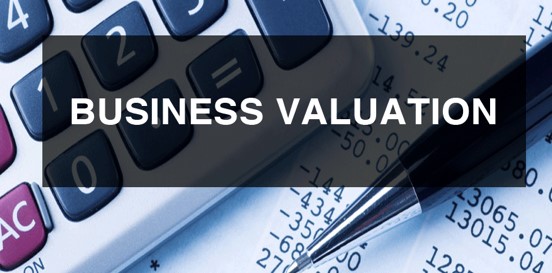
The next step:
Get your business valued today.
(The Stamford Exit Plan has got you covered here.)
If you don’t, you’ll have no idea what amount is necessary to fund your retirement.
There are many ways to value your business, and you most likely don’t have a great grip on which one is most applicable to your situation.
The last thing you want to do is put your business up for sale at a price that is 2 x or 3x what it’s worth or undervalues what it’s worth.
One of the common mistakes by business owners is that they overvalue their business.
This is a fatal mistake!!!
The Stamford Exit Planning, gives you all the tools you need to value your business CORRECTLY.
Remember earlier on in this article; I asked you what is the average price a business sold for?
Well, I’ll tell you now…
2.6 x EBITD !!!!!
Or
In English 2.6 x PROFIT.
Not very much for a lifetime of work. But if you are looking into selling your business, you need to know this is what you will most likely get for it – IF you are one of the lucky ones that actually do sell…
Now, I do agree that some industries and certain businesses can demand more, but there are some who will also get less.
So, if we work out that in 2017, this is the average sales price, at least it will give you a guideline.
Now, think about this… (this is important).
What happens when you decide to sell your business?
You go to a business broker; he tells you he has several buyers with open checkbooks looking for businesses like yours. He then gives you an over-inflated valuation, so you sign up with him. You then proceed to hand over anything from $15,000 – $50,000 which he tells you just cover his costs for your, Business Prospectus, Due Diligence, etc.
You then sit back thinking you’ll be getting 5-7 times, and your business is sold imminently.
The next thing that happens is FATAL…
Physiologically, you go off the boil.
You lose interest in your business and your revenue drops.
Now, this has a spiraling knock-on effect.
Why?
Well, say you don’t sell your business, and a year later a potential buyer approaches you. They’re going to want to see either statutory or audited accounts, right?
And if that potential buyer sees a business with revenue going down, what do you think he is going to think?
Do you think it will be easier or harder to sell that business?
This is why you need the Stamford Exit Plan.
Let’s have a look at the different types of business valuations, to help you selling your business quickly:
- EBITDA (EBITD and EBIT) – Earnings Before Interest, Taxes, Depreciation, and Amortization (or Earnings Before Interest and Tax)
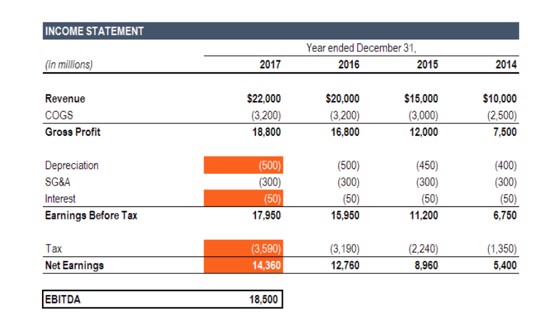
Now I’m sure you’re familiar with these terms, but I think it’s best to explain them a little more…
The purpose of this valuation is that it can showcase your business’s financial performance, without the need to account for its capital structure.
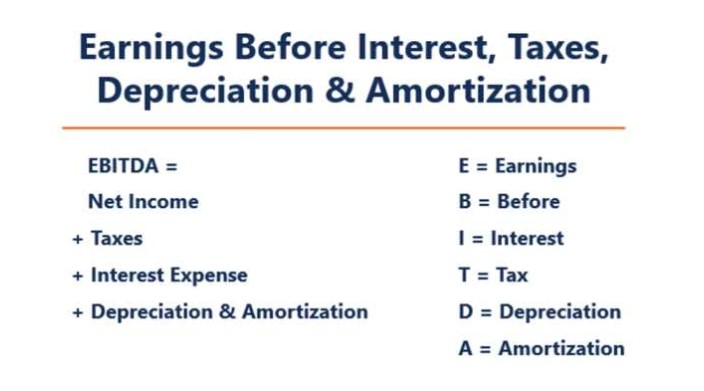
EBITDA looks at the businesses operating decisions as it focuses on the profit from its core operations before the impact of capital structure, leverage and non-cash items such as depreciation are taken into consideration.
EBIT excludes non-operating and non-cash expenses.
EBIT excludes Amortization.
- Balance sheet – List the company’s assets and liabilities which makes it easy to calculate the ‘book value’ and gives you an estimate of how much your business is worth. (This includes: cash, equipment, real estate, inventory, trademarks, patents, stocks, etc.)
- Discounted Cash Flow Method – This valuation method is based upon your business’s future net cash flows and discounts them to present day values.
- Relative Valuation – With this method, you determine how much a similar business like yours would bring if sold. It compares your business’s assets value to the value of similar assets and gives you a reasonable price.
These are just some of the different valuation methods… but most small owner-managed businesses would sell on an EBITDA – operating profit.
If you would like to know more, we have a whole section on valuation in the Stamford Exit Plan, including valuing your business.
Going back to how to selling your business… Who can help you?
(REMEMBER: DO NOT make the mistake of letting a business broker value your business!!!)
#4 Business Brokers and why you shouldn't use them
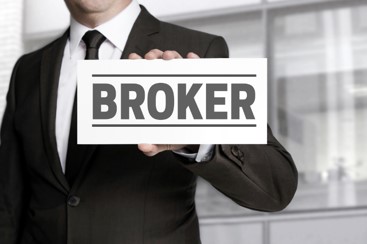
What does a business broker do?
Business brokers are sometimes referred to as business transfer agents or intermediaries and assist buyers and sellers in the buying and selling process of small businesses.
The question is… Do you need one?
The short answer is NO…
Especially if you join the Stamford Exit Plan.
Don’t get me wrong, as I mentioned earlier, they will appeal to your vanity and tell you how great your business is and that they have buyers sitting there waiting.
Sounds great right?
They’ll also do a valuation which, more often than not, will be a lot more than your business is worth.
They do this for the single reason… to get you to sign up.
A lot of business brokers will turn around and say to you… we only make money after selling your business – we only work on commission.
Don’t be fooled… that’s not how they work.
What a business broker does and how their model works, is charging you a sign-up fixed fee that, they say, is just to cover their costs.
It is not; this is how they make money – the commission is a bonus, if it happened.
They will sit you down and create a business prospectus for you.
You’ll need a business prospectus to give to potential buyers as it gives them an overview of your business.
They’ll also produce a SWOT analysis for you – a useful technique used in understanding your organizations’ strengths, weaknesses, and identifying opportunities open to your business and external threats.
This shows your potential buyers that the business is well thought out and that you understand the market.
You will need these if you are thinking of selling your business because you’ll have to send them out to a lot of potential buyers.
The other thing a business broker does is put together a due diligence pack.
BUT…
They WON’T do the due diligence for you.
There are two main reasons businesses don’t sell:
- Business Valuation
- Due Diligence
So, if you can address these two ISSUES, you’ll be in a stronger position when selling your business.

If you join the Stamford Exit Plan, we cover these two major issues in a LOT of detail so that you won’t get caught out.
We leave no stone unturned on how to create a very detailed Business Prospectus so that potential buyers will bite your hand off to buy your business.
We will show you the RIGHT due diligence and how to present it.
We all know that the Business Prospectus is critical, but what’s even more critical is how you write it and put it together.
A business broker will simply outsource it to a secretary in their firm – they tend to be very boring, very dull and not very interesting to read.
The key is… knowing what needs to be in it.
Your Business Prospectus needs to be a sales document – a sales brochure. It needs to be sharp and to the point.
Think about a brochure you’ve already produced that’s selling one of your services or products…
Remember… FAB?

Features, Advantages, Benefits?
That’s exactly how your Business Prospectus needs to be written – that’s exactly what we will do in the Stamford Exit Plan.
Our proven strategy puts it together in a way that makes buyers salivate wanting to buy your business.
I promise you; we’ve done these hundreds of thousands of times.
Going back to the broker… Once you’ve handed over between $15,000 – $50,000 to them…
(Yes, you head me right $15 – $50K!!!!)
…guess what happens?
Six months later, you get a couple of inquiries, normally a few tire-kickers coming along and wasting your time.
What do you think the Broker will tell you?
I think the business price is too high!!
Why?
We all know the game.
Initially they come in and tell you what they think it’s worth and give you an initial overvaluation… to get you to sign up. Then six months later they tell you to reduce it to 3 x earnings as that is more realistic.
But what do business brokers do for their money?
Once they’ve got you on side, they put your Business Prospectus on a few websites.
More often than not, when a potential buyer picks up the phone and speaks to them, they know very little about your business because they deal with hundreds.
Why not try it for yourself?
Phone up a business broker and tell them you’re interested in a business – ask them some strategic questions about the business – let’s see how many of them know the answer when you put them on the spot.
I bet it’s zero!
With the Stamford Exit Planning, we can save you the cost of that business broker and show you how to structure your Business Prospectus in such a way that potential buyers come running.
Business Brokers give you a vanity valuation to acquire your business.
Understanding this now is critical.
The last thing you want is to sell your business only to find out that you overvalued it by 2x, which means you won’t be able to retire.
That’s a mistake that many owners will make, but not those who have used the Stamford Exit Plan.
#5 Growth Strategies
If selling your business won’t currently meet your financial objectives, you may need to grow it.
The best way to grow your business is to retain a growth expert in order to get there.
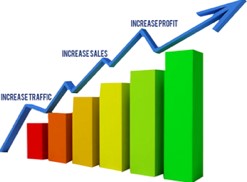
Now:
You COULD find a growth expert or maybe use an accountant.
(And that definitely works.)
(If you find the right one of course.)
OR
Go with a proven way: The Stamford Exit Plan has you covered.
Either way, you’ll need to systematically grow your business to meet the targets you identified in the previous step.
#6 Identify Buyers
Once you’ve hit your growth goals, it’s time to identify a buyer.
You could sell to somebody in your industry, a professional investor, a strategic buyer, or even sell the company to your employees.

There are pros and cons to each, and you should explore each option as part of your due diligence.
#7 Pulling the Trigger
There are many things you need to consider as you complete the sale.
How will you transition yourself out of the business?
Are there any post-closing issues you’ll need to deal with?
What confidentiality clauses do you need to be aware of?
How do you let your employees, vendors, customers, and lenders know about the sale?
Conclusion
Selling your business will likely be the most significant financial transaction you ever undertake, and there are many, many considerations that we aren’t able to cover in this brief guide.
What are the typical valuation method and average multiple companies sell for? EBITDA (Operating Profit) Average selling price 2.6 X EBITDA
Not much for a life time’s work… and these are the few companies that got sold.
If you are serious about eventually selling your business, there are two things you should do next.
First: Go on the Stamford Exit Plan course – I’ve got your back.
Second: If you have the following:
- A Business Partner;
- Your Life Partner (Husband/Wife); and
- Your Accountants.
…you should also go on the Stamford Exit Plan course.
It might mean the difference between retiring in comfort and having to find a new job.
Now, over to you
Either way, feel free to leave your comments below and I’ll be sure to answer as soon as they come in.


